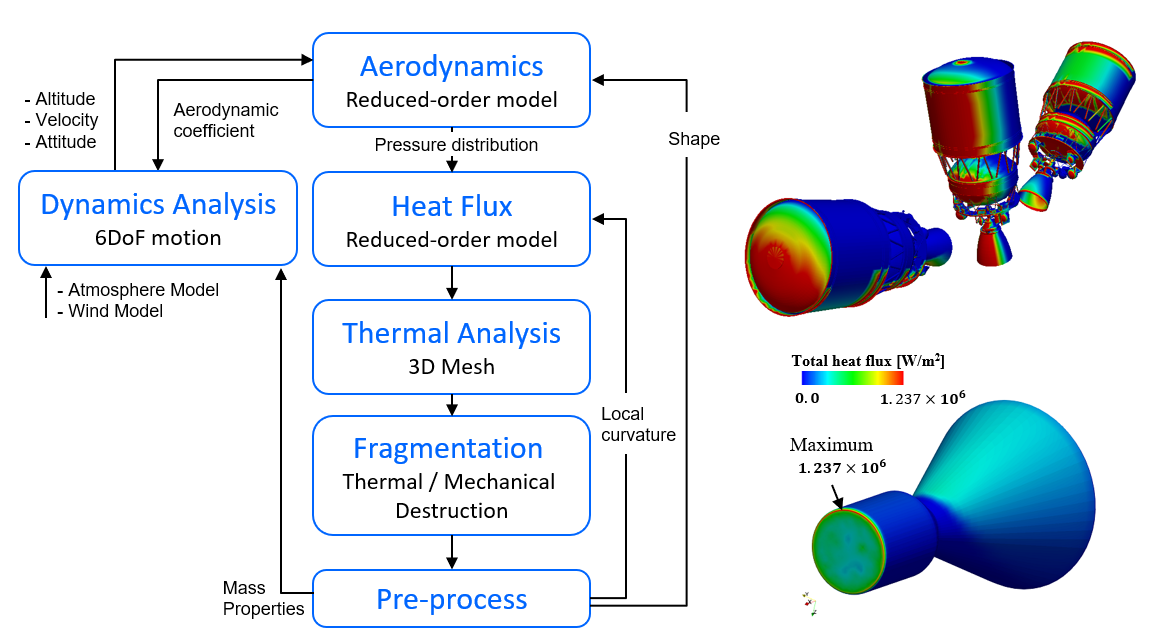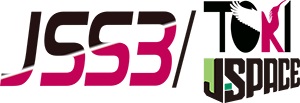Development of High-fidelity Re-entry Safety Analysis Methods
JAXA Supercomputer System Annual Report April 2019-March 2020
Report Number: R19EG3216
Subject Category: Research and Development
- Responsible Representative: Eiji Sima, Research and Development Directorate, Research Unit III
- Contact Information: Keiichiro Fujimoto(fujimoto.keiichiro@jaxa.jp)
- Members: Taisuke Nambu, Takayuki Ito, Hideyo Negishi, Yoichi Ohnishi, Miki Nishimoto, Yu Daimon, Ashvin Hosangadi, Takeru Fukuchi, Masaaki Ino, Osamu Fukasawa, Shinji Ohno, Andrea Zambon, Takenori Nakajima, Takashi Amemiya, Yutaka Umemura, Hironori Fujiwara, Hiroumi Tani, Keiichiro Fujimoto, Tetsufumi Ohmaru, Taroh Fukuda, Masashi Toyama, Yuki Ide, Shohta Sutoh, Akimitsu Terunuma, Kota Akai
Abstract
High-fidelity re-entry safety analysis code LS-DARC is under the development in JAXA in order to realize the accurate EC predictions and the design-for-demise for the rocket upper statges and space-crafts.6 Dof trajectory analysis, aerodynamics, heat flux, 3D thermal conductance can be considered by the coupling analysis code based on the reduced order models. Since models in LS-DARC is versatile and its turn-around time is very short, it has been applied wide range of aerospace engineering applications such as the research and development activities for HTV small re-entry capsule : HSRC and the fly-back re-usable rocket.
Reference URL
N/A
Reasons and benefits of using JAXA Supercomputer System
Probabilistic re-entry safety analysis based on the multi disciplinary coupling analysis with considering various uncertainty factors is essential. In addition consideration on the design parameter effect should also be considered. In addition, in-house computational environment is essential also for security reason. Consequently, JSS2 is essential.
Achievements of the Year
In this fiscal year, the re-entry safety analyses for the full configuration of the rocket upper stages and the rocket engine have been conducted for the LS-DARC development, which is the high-fidelity multi-desciplinary coupling analysis tool of JAXA.
As a result, the parameter sensitivity analysis on the expected casualty risk, the identification of the further improvement tasks especially on the heat flux and the aerodynamic characteristics models, tool improvements for the practical analysis on the complicated shapes and configurations have been carried out. Furthermore, the validation analyses for the analysis capability to handle separated multiple fragments have also been carried out. Schematic overview of models of LS-DARC and the example results of the surface heat flux is shown as Fig. 1.

Fig.1: Schematic overview of the multi-disciplinary high-fidelity re-entry analysis code LS-DARC, and surface heat flux distributions for HIIB upper stage and rocket engine.
Publications
– Non peer-reviewed papers
Fujimoto, K., Negishi, H., Daibo, T., Iizuka, N., Shimizu, R., and Okita, K., “High-fidelity Spacecraft-oriented Re-entry Safety Analysis Code of JAXA : LS-DARC,” 10th IAASS, 2019.
Usage of JSS2
Computational Information
- Process Parallelization Methods: MPI
- Thread Parallelization Methods: MPI
- Number of Processes: 32 – 192
- Elapsed Time per Case: 168 Hour(s)
Resources Used
Fraction of Usage in Total Resources*1(%): 0.02
Details
Please refer to System Configuration of JSS2 for the system configuration and major specifications of JSS2.
| System Name | Amount of Core Time(core x hours) | Fraction of Usage*2(%) |
|---|---|---|
| SORA-MA | 105,968.96 | 0.01 |
| SORA-PP | 38.07 | 0.00 |
| SORA-LM | 0.00 | 0.00 |
| SORA-TPP | 3.15 | 0.00 |
| File System Name | Storage Assigned(GiB) | Fraction of Usage*2(%) |
|---|---|---|
| /home | 406.85 | 0.34 |
| /data | 25,781.24 | 0.44 |
| /ltmp | 15,406.12 | 1.31 |
| Archiver Name | Storage Used(TiB) | Fraction of Usage*2(%) |
|---|---|---|
| J-SPACE | 1.60 | 0.04 |
*1: Fraction of Usage in Total Resources: Weighted average of three resource types (Computing, File System, and Archiver).
*2: Fraction of Usage:Percentage of usage relative to each resource used in one year.
JAXA Supercomputer System Annual Report April 2019-March 2020


